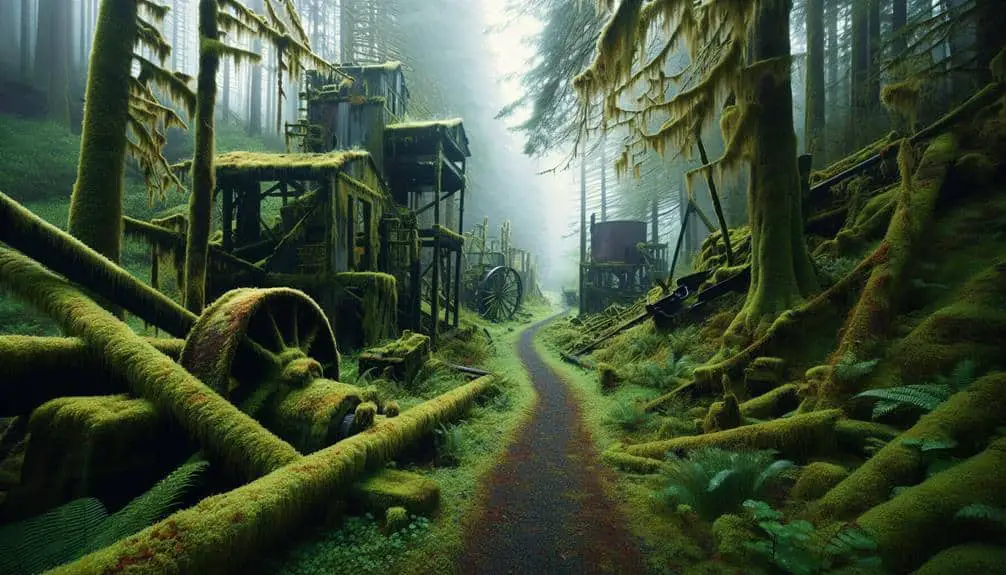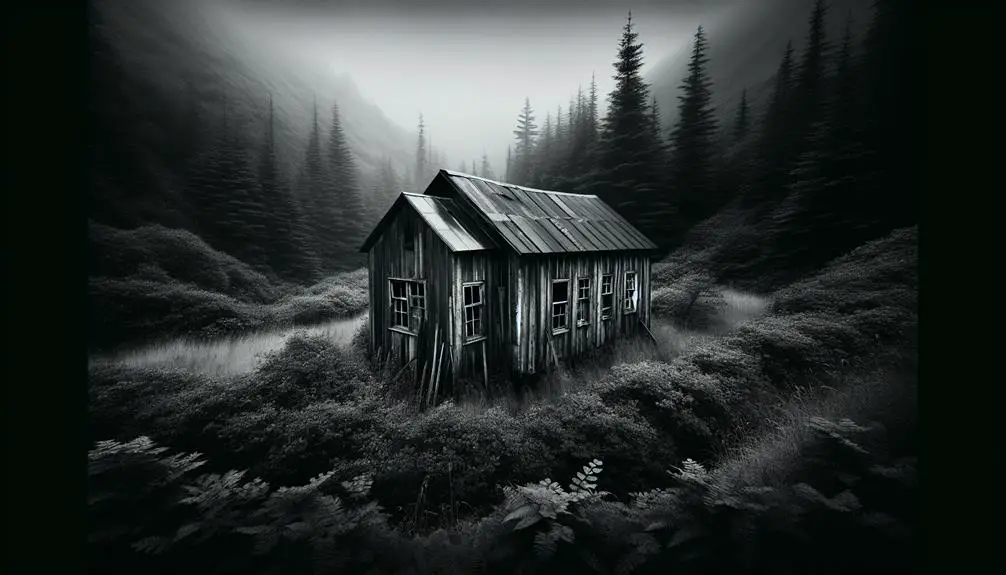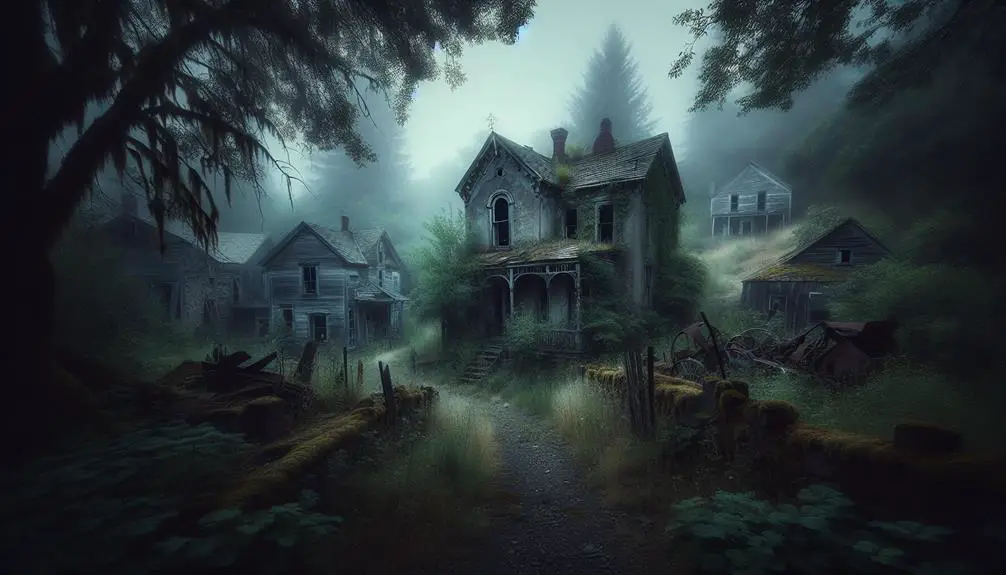Begin on a thrilling journey exploring Pacific Northwest ghost towns with our detailed hiking trails guide. Discover remnants of gold rush mining towns telling tales of boom and bust. The Monte Cristo Ghost Town Trail in Washington and Opal Creek Ancient Forest Center Trail in Oregon offer historical intrigue. Immerse yourself in pioneer stories while uncovering hidden treasures and abandoned buildings. Carry essentials, inform someone of your plans, and respect safety guidelines. Peak seasons are June to September, providing clear skies and longer daylight hours. Preserve these treasures by engaging with communities and heritage organizations. Explore further to enhance your adventure.
Key Points
- Explore historic Monte Cristo and Opal Creek trails for ghost town remnants.
- Prepare with essentials like maps, water, and appropriate gear for safety.
- Visit between June and September for optimal weather conditions.
- Engage in community efforts to preserve and protect ghost town heritage.
- Stay on designated trails, respect signage, and prioritize safety while exploring.
History of PNW Ghost Towns
Explore the intriguing beginnings and development of Pacific Northwest ghost towns through a lens that investigates deeply into the region's abundant history and cultural heritage. The mining towns of the Pacific Northwest hold tales of boom and bust, with once-thriving communities now standing as abandoned settlements frozen in time. These towns sprang to life during the gold rushes of the late 19th century, drawing fortune seekers from far and wide to seek their dreams in the rugged landscapes of Washington, Oregon, and Idaho.
As you investigate the history of these mining towns, you uncover stories of perseverance, struggle, and resilience. The remnants of old mining equipment, dilapidated buildings, and deserted streets paint a vivid picture of the past. Each ghost town has its own unique story to tell, reflecting the challenges and triumphs of the pioneers who once called these places home.
Immerse yourself in the rich tapestry of the Pacific Northwest's mining heritage as you explore these abandoned settlements, each offering a glimpse into a bygone era filled with hope, ambition, and the pursuit of wealth.
Top Ghost Town Hiking Trails
Begin a journey through the rugged beauty of the Pacific Northwest by exploring the top ghost town hiking trails that weave through the region's storied past. These trails offer a unique opportunity to immerse yourself in the history and mystery of abandoned buildings while uncovering hidden treasures along the way.
One of the must-visit trails is the Monte Cristo Ghost Town Trail in Washington. This trail leads you through the remnants of a once-thriving mining town, where you can explore old cabins, mine shafts, and artifacts left behind by the town's former residents.
For a different experience, head to the Opal Creek Ancient Forest Center Trail in Oregon. While hiking through this lush forest, you'll stumble upon the abandoned buildings of Jawbone Flats, a former mining town. The trail offers a fascinating blend of natural beauty and historical intrigue.
Whether you're drawn to the allure of abandoned buildings or the thrill of discovering hidden treasures, these top ghost town hiking trails in the Pacific Northwest are sure to satisfy your sense of adventure.
Safety Tips for Exploring
Before starting on your discovery of ghost town hiking trails in the Pacific Northwest, it's crucial to acquaint yourself with essential safety tips to guarantee a seamless and pleasant adventure.
When setting out on your exploration, always inform someone of your plans, including the trail you intend to take and your expected return time.
Carry necessities such as a map, compass, water, snacks, and a first aid kit.
Prioritize wearing appropriate footwear and clothing for changing weather conditions.
Make sure your electronic devices are fully charged and carry a backup power source.
Be mindful of wildlife and avoid feeding or approaching them.
In case of emergencies, have a fully charged phone and know the emergency contact numbers for the area.
Stay on designated trails, respect any signage, and avoid venturing into unstable structures.
To conclude, familiarize yourself with the area's regulations and guidelines to ensure a safe and enjoyable ghost town exploration experience. Remember, preparation and caution are key components of successful adventures.
Best Time to Visit
For the most ideal experience when exploring Pacific Northwest ghost towns, timing your visit to coincide with the region's mild summers is highly recommended. The peak seasons for visiting these ghost towns typically fall between June and September when the weather conditions are most favorable. During this time, you can expect clear skies, warm temperatures, and minimal rainfall, making it perfect for hiking and exploring the abandoned remnants of the past.
Visiting during the summer months allows for better access to the trails and sites without having to worry about snow or extreme weather conditions that can be prevalent during the winter. The longer daylight hours also provide more time for exploration and discovery.
However, it's crucial to mention that summer can also be a popular time for tourists, so if you prefer a quieter experience, consider visiting in the shoulder seasons of late spring or early fall.
Preserving Ghost Town Heritage
When looking at preserving the heritage of Pacific Northwest ghost towns, the focus shifts towards maintaining the historical integrity of these abandoned sites for future generations to explore and learn from. Heritage preservation is essential to make certain that the stories and essence of these ghost towns aren't lost to time.
Engaging the community in this preservation effort is imperative. By involving local residents, historians, and enthusiasts, a collective effort can be made to protect these sites.
Community engagement plays a significant role in preserving ghost town heritage. Organizing clean-up events, historical tours, and educational programs can help raise awareness about the importance of these sites. Additionally, establishing partnerships with heritage organizations and government agencies can provide support and resources for preservation initiatives.
Frequently Asked Questions
Are There Any Guided Tours Available for Exploring Ghost Towns in the Pacific Northwest?
If you prefer private tours, various companies offer guided experiences exploring ghost towns in the Pacific Northwest. Alternatively, for a more independent adventure, you can opt for self-guided exploration to investigate these historical sites at your own pace.
What Should I Do if I Encounter Wildlife While Hiking to a Ghost Town?
If you encounter wildlife while hiking to a ghost town, stay calm and avoid sudden movements. Give animals space and slowly back away. Keep food sealed, make noise, and carry bear spray. Enjoy photography opportunities, but prioritize safety.
Are There Any Restrictions or Permits Required for Visiting Certain Ghost Towns in the Pacific Northwest?
Want to explore ghost towns in the Pacific Northwest hassle-free? Check for permit requirements and access restrictions before your adventure. Guarantee a smooth journey by planning ahead and respecting the rules in place.
Are There Any Nearby Accommodations or Camping Options for Overnight Stays Near Ghost Towns?
You'll find a variety of camping options and lodges near ghost towns in the Pacific Northwest. Some spots offer RV parks for overnight stays. Explore the area and choose the accommodation that suits your adventure best.
How Can I Contribute to the Preservation Efforts of Ghost Town Heritage in the Pacific Northwest?
Want to make a difference in preserving PNW ghost town heritage? Get involved in volunteer opportunities, fundraising events, educational workshops, and historical research. Your efforts help protect and honor the rich history of these towns.



